Fourth grader Kaelyn Krawczyk — better known as KK — has been hooked up to plenty of beeping machines during her 10 years, but not one piece of medical technology has been as vital to her as a Terrier mix named JJ. The now 5-year-old mutt made history when she helped doctors monitor their young patient during surgery. Not bad for a pup sprung from The Orange County Animal Shelter in Chapel Hill, North Carolina.
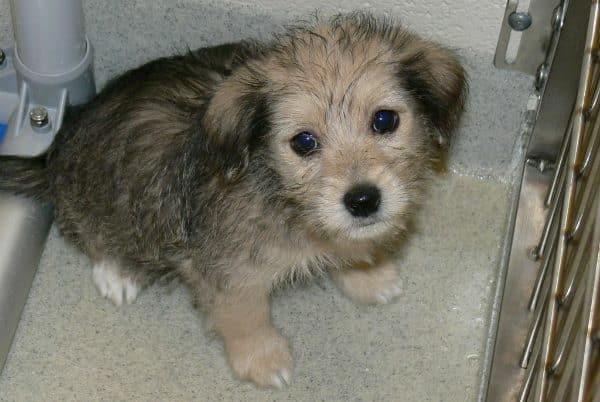
JJ’s intake photo at the shelter. Back then her name was “A127927”. (Photo courtesy Angel Paws for KK on Facebook)
JJ was just a fuzzball of a puppy when the program director of non-profit assistance dog organization Eyes Ears Nose and Paws (EENP) recognized her potential, pulling her out of the shelter and into a training program for diabetic assistance dogs. Named JJ in honor of a couple of EENP volunteers called Jenna and Jerry, JJ was 1 year old when she met another youngster with alliterative initials.
“The first time I saw JJ, I ran to her because I loved her so much and I knew she would be perfect for me,” KK tells Dogster.
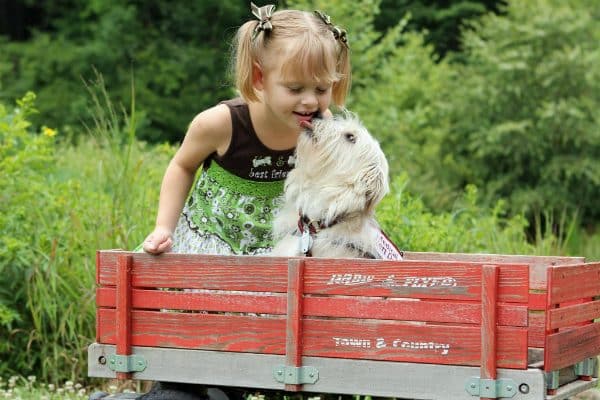
KK and JJ on EENP Graduation Day in June 2012. (Photo courtesy Angel Paws for KK on Facebook)
According to her mother, Michelle Krawczyk, KK was diagnosed with mastocytosis (a rare disease that can send her into anaphylactic shock) when she was just a baby. KK’s body makes too many mast cells (part of the body’s immune defense system).
The overproduction leads to reactions similar to those of allergy sufferers, with one major difference: KK can’t avoid the causes. Heat, cold, and fatigue are just a few of the triggers that could set off a life threatening episode.
KK could be playing with her siblings and go from asymptomatic to anaphylactic in minutes. Kindergarten seemed out of the question.
“Before we had JJ, we went to a doctor’s appointment and they said I would probably never be able to go to school, and then we got her and they thought it would be safe enough,” KK explains.
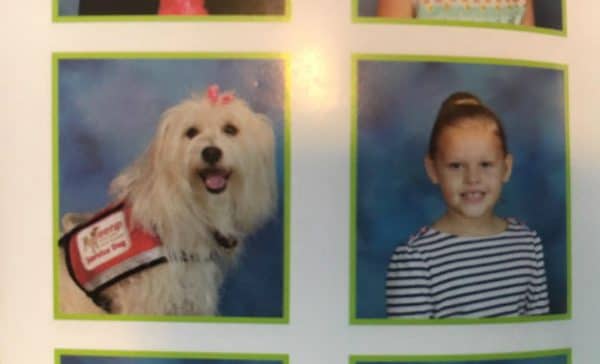
Because of JJ, KK goes go school. Her classmates love and respect JJ, who is even in the yearbook. (Photo courtesy Angel Paws for KK on Facebook)
KK’s journey to JJ began when Michelle began investigating assistance dogs not long after that disheartening doctor’s appointment.
“I was thinking that I would get a dog to go get help, so if KK started to have a reaction, she could say ‘go get help’ to the dog and the dog could come get me — that’s what we thought a dog could do,” Michelle says.
“In a million years, we would never guess that we would have a dog who would do this.”
What JJ does is alert KK and those around her to an oncoming mastocytosis reaction, giving then the chance to stop an activity, take a rest, rehydrate, or in the most serious cases, provide medication. Michelle credits EENP’s program director, Deb Cunningham, for exploring the possibility of canine alerting for mastocytosis, something that as far as KK’s family knows had not been done before.
“The fact that JJ can do the things that she does is completely because of Deb’s ability to understand what dogs are capable of. I certainly didn’t seek out a dog I thought would be able to detect her reactions.”
JJ was trained to react to a mastocytosis scent using methods from the EENP Diabetic Assistance Dog program. To determine if this was possible, EENP collected saliva samples from KK and two other people with mastocytosis during a reaction. JJ was able to alert to all mastocytosis samples accurately and was trained to alert a parent at the first scent, often before visible signs of a reaction are present.
“I think that medically she proved herself when KK had an anaphylaxis while she was at the hospital, and JJ alerted us before any of the monitors showed any signs of a reaction,” Michelle recalls. “I think from that moment on, the medical team was like, alright, now we have the concrete proof.”
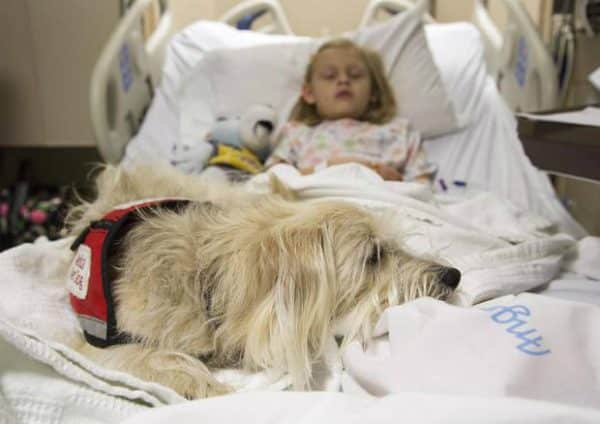
JJ lies with KK in the hospital. (Photo courtesy Angel Paws for KK on Facebook)
After that incident, the girl and her dog made headlines around the world when KK’s doctors chose to bring JJ into a procedure room during KK’s 2013 kidney surgery at the Children’s Health Center at Duke University Medical Center. There just wasn’t any piece of medical tech that could predict KK’s reactions like JJ.
The surgery went well, and three years later KK and JJ are marking a new milestone in their partnership. Michelle is no longer sitting in the classroom during KK’s shortened school day.
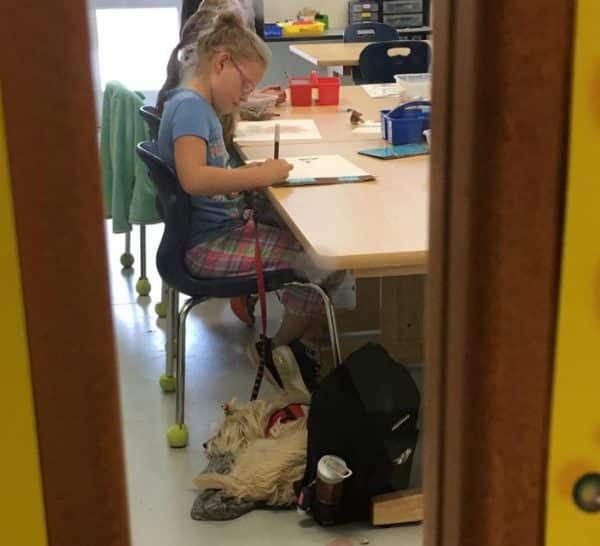
KK works during art class while JJ lays on her jacket. (Photo courtesy Angel Paws for KK on Facebook)
“Although I’m still on campus to address medical issues that arise during the day, they are now able to be in class by themselves,” says Michelle. “I wouldn’t feel comfortable with that without JJ there watching over her.”
The post How a Former Shelter Puppy Makes It Possible for a 10-Year-Old Girl to Attend School appeared first on Dogster.
No comments:
Post a Comment